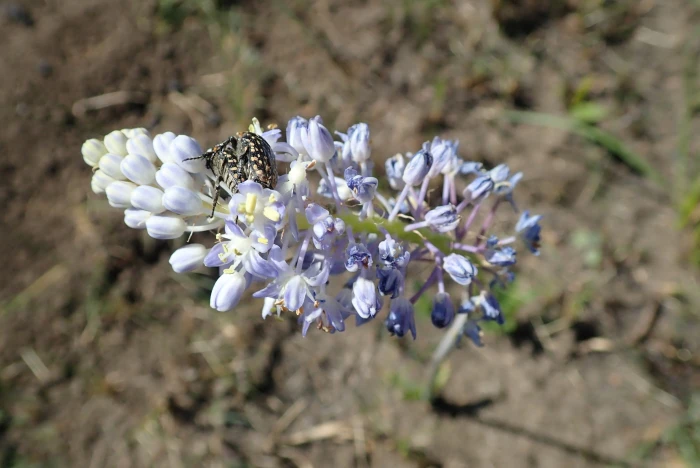Blue Squill
(Merwilla plumbea)
Blue Squill (Merwilla plumbea)
/
/

Peter Warren
Public Domain
Image By:
Peter Warren
Recorded By:
Copyright:
Public Domain
Copyright Notice:
Photo by: Peter Warren | License Type: Public Domain | License URL: http://creativecommons.org/publicdomain/zero/1.0/ | Rights Holder: Peter Warren | Publisher: iNaturalist | Date Created: 2019-10-20T10:05:58-07:00 |




















































Estimated Native Range
Climate Requirements for Tarpon Springs, Florida
| This Plant | Your Site | Plant Suitability for Your Location | ||
|---|---|---|---|---|
| • Precipitation | 17" - 66" | 52" | Aquatic | Aquatic |
| • High Temp. | 62°F - 90°F | 91°F | Your summers may be too hot for this plant. | Too hot |
| • Low Temp. | 24°F - 55°F | 50°F | Your winter temperatures are normal for this plant | Excellent |
This plant may not grow well at your location - your precipitation is too high.
Summary
Merwilla plumbea, commonly known as Blue Squill, is a deciduous perennial bulb native to grasslands, rocky outcrops, and open woodlands from South Malawi to Eastern South Africa. It typically grows to a height of 2 feet (0.6 meters) and a width of 1 foot (0.3 meters). The plant features strap-shaped leaves and a dense raceme of star-shaped flowers, which are a striking blue to purple in color, blooming in the summer months. The flowers are particularly showy, making it a favorite among gardeners for adding a splash of color to the landscape.
Blue Squill is valued for its ornamental flowers and is often used in rock gardens, borders, and as a container plant. It is relatively easy to maintain, requiring minimal care once established. For optimal growth, it should be planted in well-draining soil and provided with consistent moisture during the growing season. While it prefers full sun or part shade, it can tolerate a range of light conditions. After flowering, the foliage dies back, and the plant goes dormant until the next growing season. It is generally pest-free but can be susceptible to rot if overwatered or planted in poorly draining soils.CC BY-SA 4.0
Blue Squill is valued for its ornamental flowers and is often used in rock gardens, borders, and as a container plant. It is relatively easy to maintain, requiring minimal care once established. For optimal growth, it should be planted in well-draining soil and provided with consistent moisture during the growing season. While it prefers full sun or part shade, it can tolerate a range of light conditions. After flowering, the foliage dies back, and the plant goes dormant until the next growing season. It is generally pest-free but can be susceptible to rot if overwatered or planted in poorly draining soils.CC BY-SA 4.0
Plant Description
- Plant Type: Bulb
- Height: 1-3 feet
- Width: 0.333-1 feet
- Growth Rate: Moderate
- Flower Color: Blue, Purple
- Flowering Season: Summer
- Leaf Retention: Deciduous
Growth Requirements
- Sun: Full Sun, Part Shade
- Water: Medium
- Drainage: Fast
Common Uses
Low Maintenance, Rock Garden, Showy Flowers
Natural Habitat
Native to grasslands, rocky outcrops, and open woodlands from South Malawi to Eastern South Africa
Other Names
Common Names: Blue-Hyacinth
Scientific Names: Merwilla plumbea, Scilla natalensis, Merwilla natalensis, Scilla kraussii, Scilla plumbea, Merwilla kraussii, Merwilla plumbea subsp. kraussii
GBIF Accepted Name: Merwilla plumbea (Lindl.) Speta